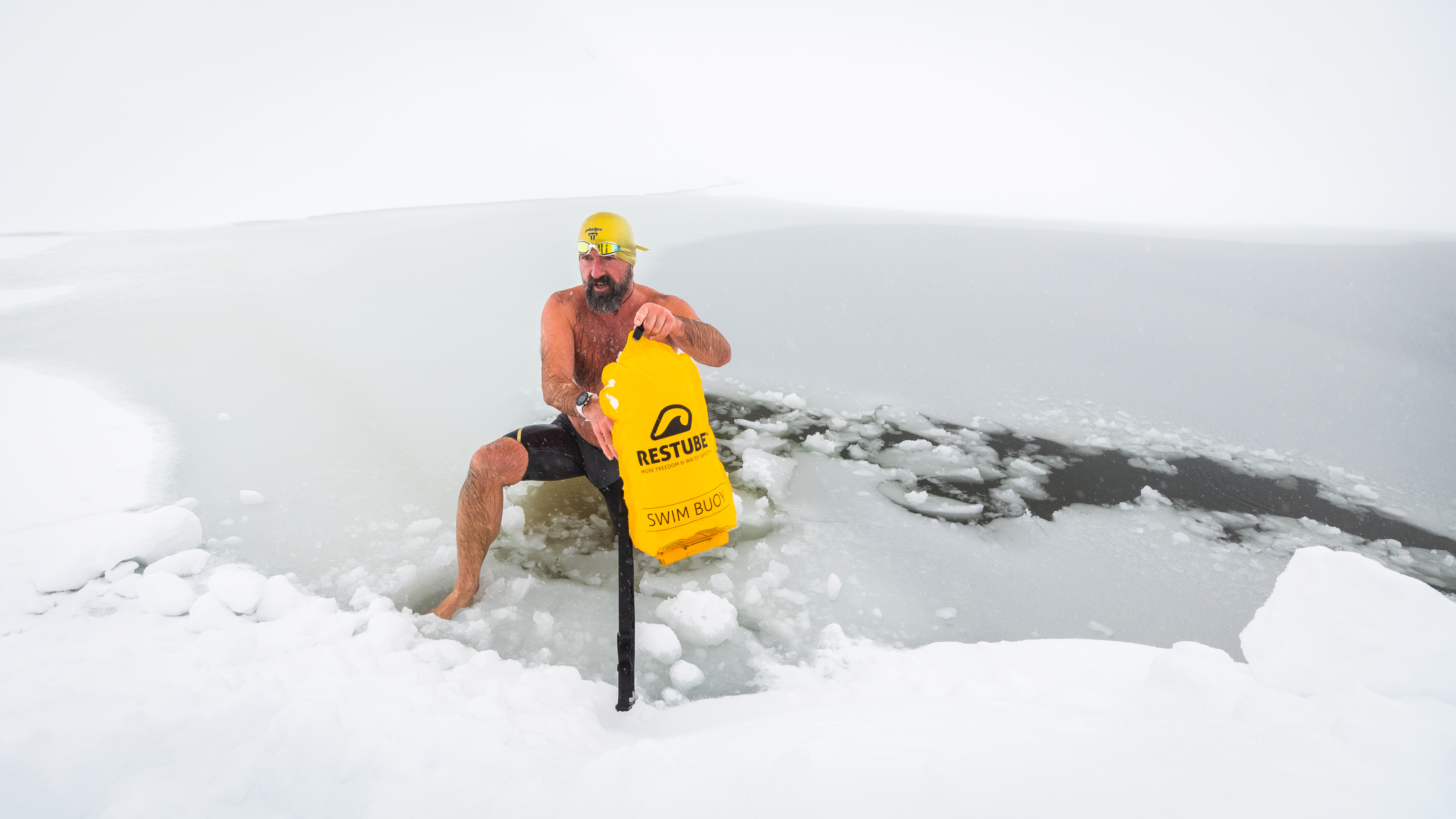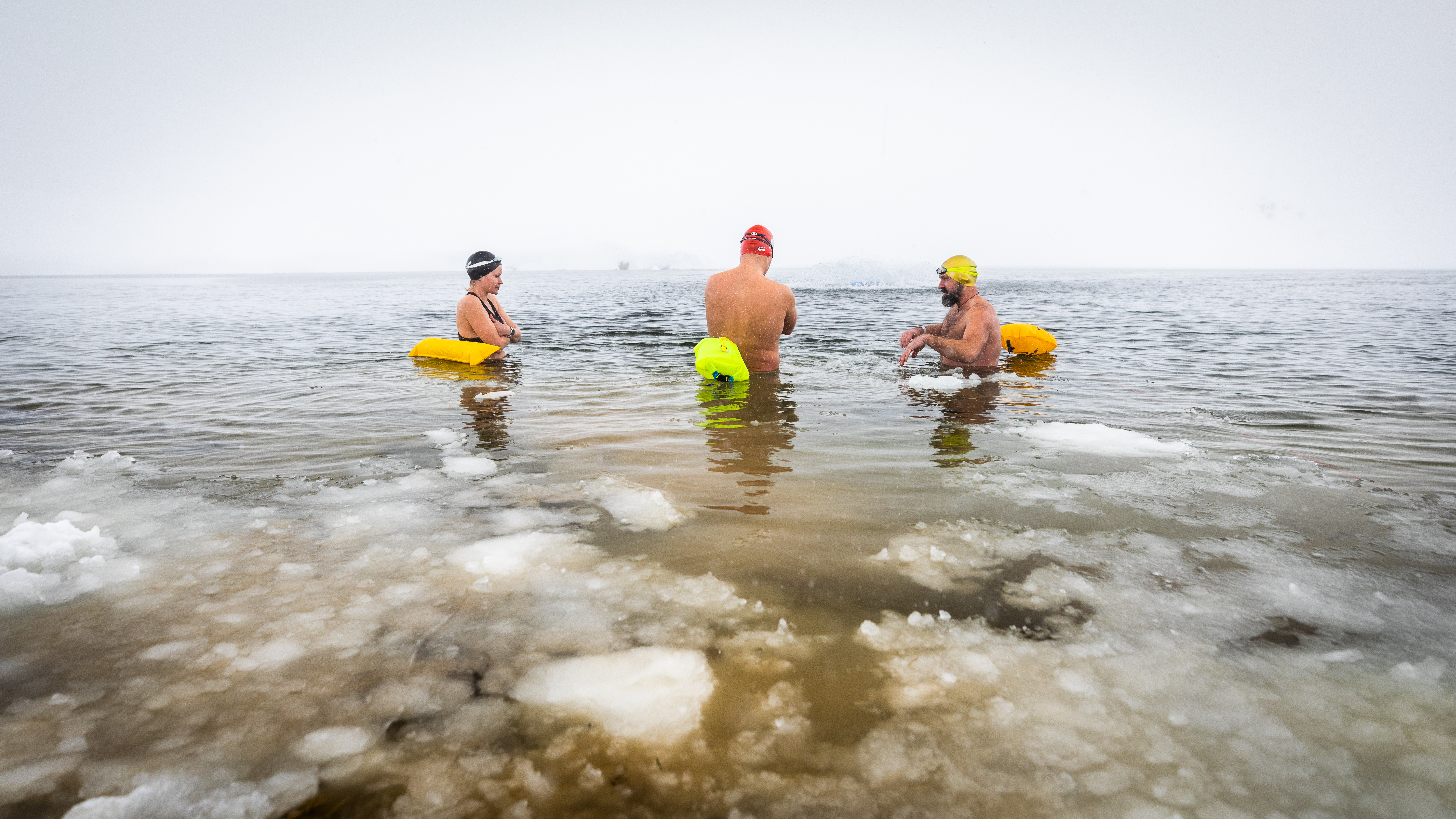“When I’m in cold water, I am myself. I’m focused entirely on my body and mind. You forget everything else. It’s something that has completely changed my life,” says the 46-year-old Austrian who knows just about all there is to know about ice-cold water. More than 5,000 amateur ice swimmers have passed through his hands. In fact, swimming in cold water is a highly community-based activity. For the groups of hardy people it’s not just a healthy activity – it’s a social experience. Watch this video to see what a gathering of people who want to dive into a frozen lake in Austria looks like.
Josef Köberl immerses himself in icy water as often as he can – sometimes every day, sometimes every other day, but sometimes even three to six times a day. “These are moments of total freedom from all thoughts, problems and concerns. When you concentrate on how the cold affects you, it’s both disarming and uplifting. Moments of pure bliss,” he says.
 Josef Köberl immerses himself in ice-cold water whenever he can.
Josef Köberl immerses himself in ice-cold water whenever he can.
Those are the mental benefits of toughening yourself up through exposure to cold. But there are also many benefits for the body: skin health improves and the cold has a positive effect on high blood pressure and overall physical condition. The activity clearly makes people tougher. The effect on mood is unquestionable – this is due to hormones that ensure that the body does not perceive the cold as a source of discomfort after a period of training. Dopamine levels, for example, can be up to two and a half times higher than normal after an ice treatment.






































